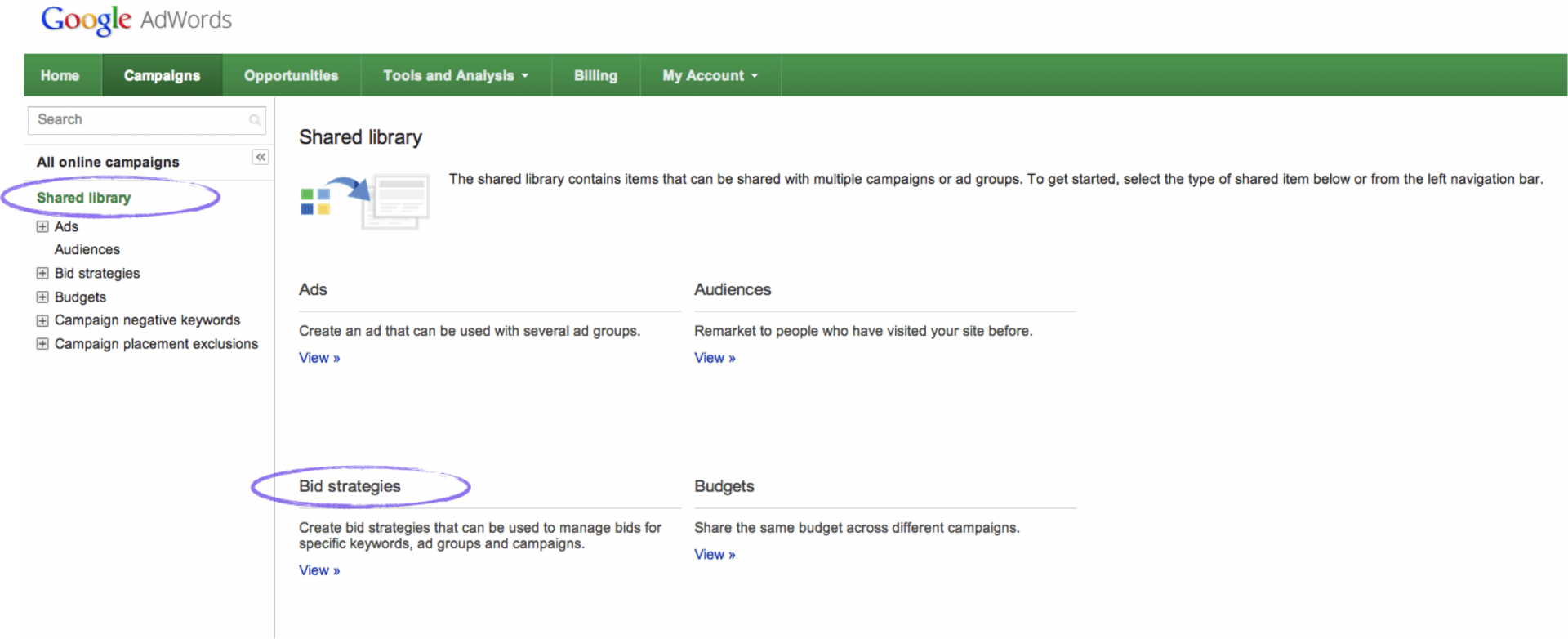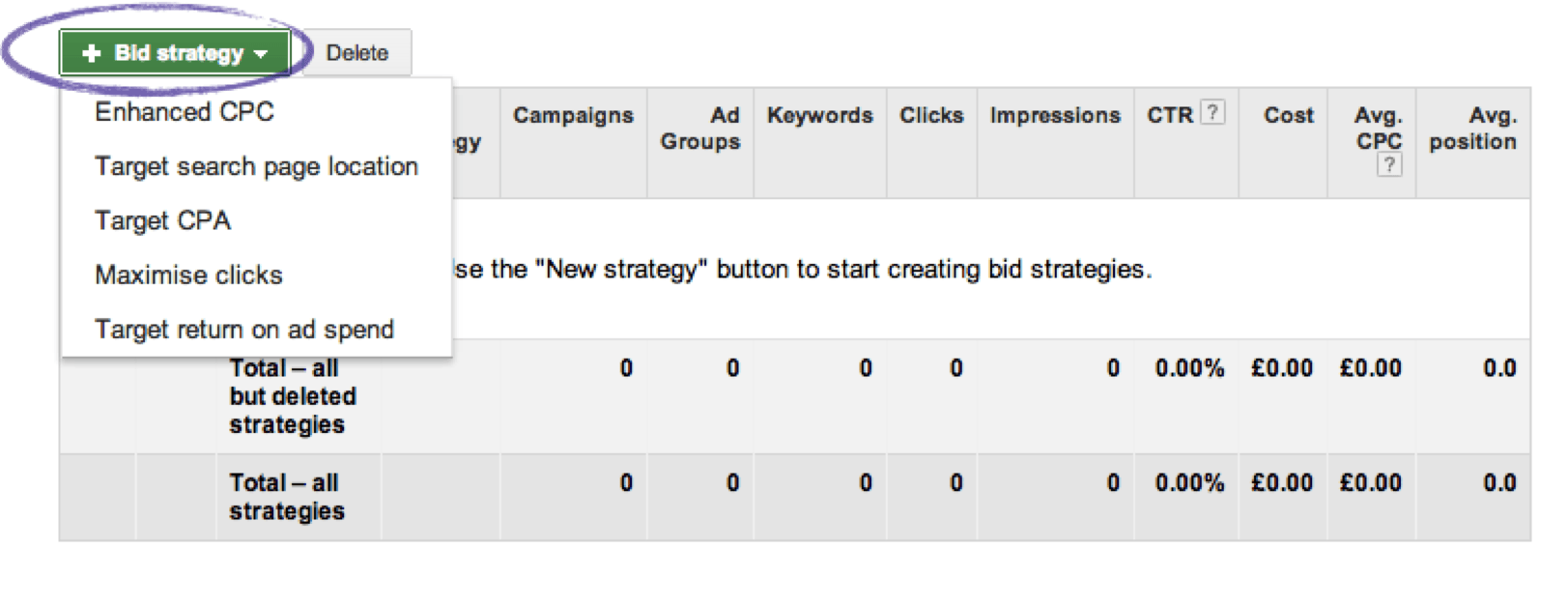Back in February, Google rolled out one of the biggest overhauls of AdWords to date: enhanced campaigns. Enhanced campaigns became mandatory in all AdWords accounts on the 22 July 2013. One of the features that I found most interesting about the new enhanced campaigns is the option to implement flexible bid strategies.
What are they?
Flexible bid strategies provide advertisers with the opportunity to use both manual and automated bidding within the same campaign. To put it in basic terms, advertisers identify a specific goal (e.g. a target search page location) and Google automatically optimises bids to ensure that the goal is met. This is achieved by Google using the device, time and location data in the account and optimising bids in accordance with that data.
There are five types of bid strategy to choose from, each with a desired goal or outcome:
Target search page location
This bid strategy aims to get your ads to the top of the search results or onto the first page of results. It should be used when your goal is to maximise visibility for your ads on the first page of Google search results. However, this previous blog post discusses why position one is not always best. This bid strategy can be applied at the campaign, ad group or keyword level.
Maximise clicks
This strategy is an update to automatic bidding in that it sets and adjusts bids in accordance with a specified spend amount to help you get the most clicks on your ads. It should be used when the primary goal is to increase site visits or when you want to maximise visits on long tail search terms while adhering to a certain spend amount. This bid strategy can be applied at the campaign, ad group or keyword level.
Target cost per acquisition (CPA)
This bid strategy is an update to the conversion optimiser and sets bids automatically with the aim of generating as many conversions as possible while adhering to your average CPA goal. This strategy should be used when the primary goal is to generate the most conversions within your target CPA. This bid strategy can be applied at the campaign or ad group level.
Enhanced cost-per-click (CPC)
This strategy is an update to the enhanced CPC bidding that already existed. This bid strategy adjusts your bid in accordance with the likelihood that each click has to generate a conversion. This strategy should be implemented when your primary goal is to increase conversions while still maintaining control over your keyword bids. This bid strategy can be applied at the campaign or ad group level.
Target return on ad spend (ROAS)
This is a new bid strategy that aims to maximise conversion value while trying to maintain an average return on ad spend. This strategy should be used when the primary goal is when conversions are valued differently and you want to reach a target ROAS. This bid strategy can be applied at the campaign, ad group or keyword level.
What are the benefits?
A huge benefit to the new bid strategies is that the feature allows advertisers to implement a bid strategy in accordance to a specified goal. Having the ability to alter bids in accordance with a goal provides you with the opportunity to control how your ads are shown.
The flexible bid strategies are all located in the shared library on AdWords, meaning that is is easy to navigate to and implement bid strategies from one central location. This feature also makes it easy to see which bid strategies are in place for each campaign, ad group and keyword in the account. The bid strategies location in the shared library also makes it much easier to roll them out en masse, which could save a lot of time!
Another major benefit of the new flexible bid strategies is that they can be applied at ad group and keyword level as well as at campaign level. This allows the opportunity to apply a bid strategy to keywords or ad groups across multiple campaigns as well as keywords and ad groups in the same campaign.
What are the downfalls?
One of the main downfalls of flexible bid strategies to advertisers is that they are not yet supported in AdWords Editor. This means that any campaign, ad group or keyword with a bid strategy in place will not have the potential to be edited in the Editor. Although this may be a slight downfall for many advertisers, I can’t help but think that this is something that will soon be updated by Google.
Some people may argue that nothing can beat manually analysing aspects of the account, such as keyword performance, and altering bids in accordance with any analysis undertaken. It is true that this strategy is definitely beneficial if you have the time to get granular with your account. However, if you have a specific goal in mind and would like Google to do a lot of the bid work for you then you should give flexible bid strategies a shot.
How do I use them?

The option to implement flexible bid strategies can be found in the Shared Library section of AdWords. Select which strategy you would like to use by clicking the ‘new bid strategy’ button. The strategy that you choose can then be implemented at a campaign, ad group or keyword level, this can be done via the main AdWords UI via the “Bid Strategy” drop down next to “Edit” and “Details”!

